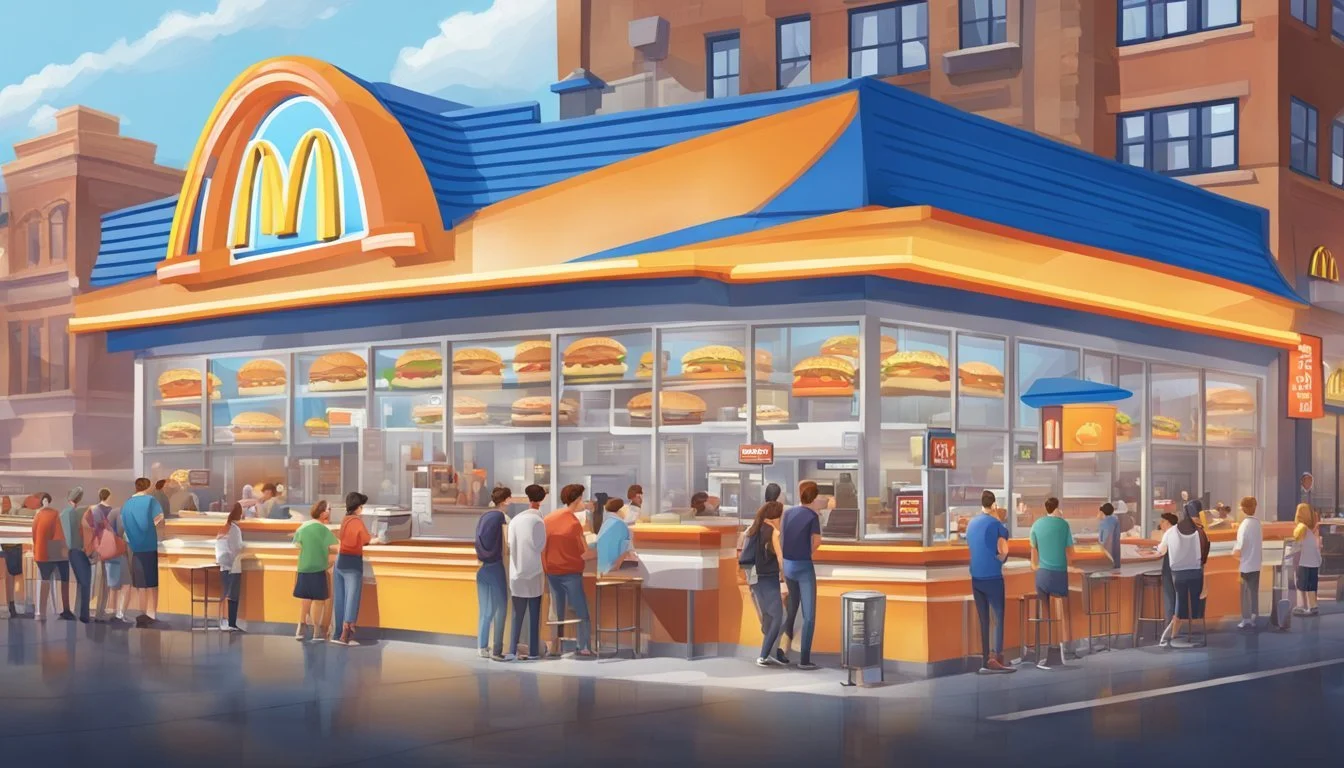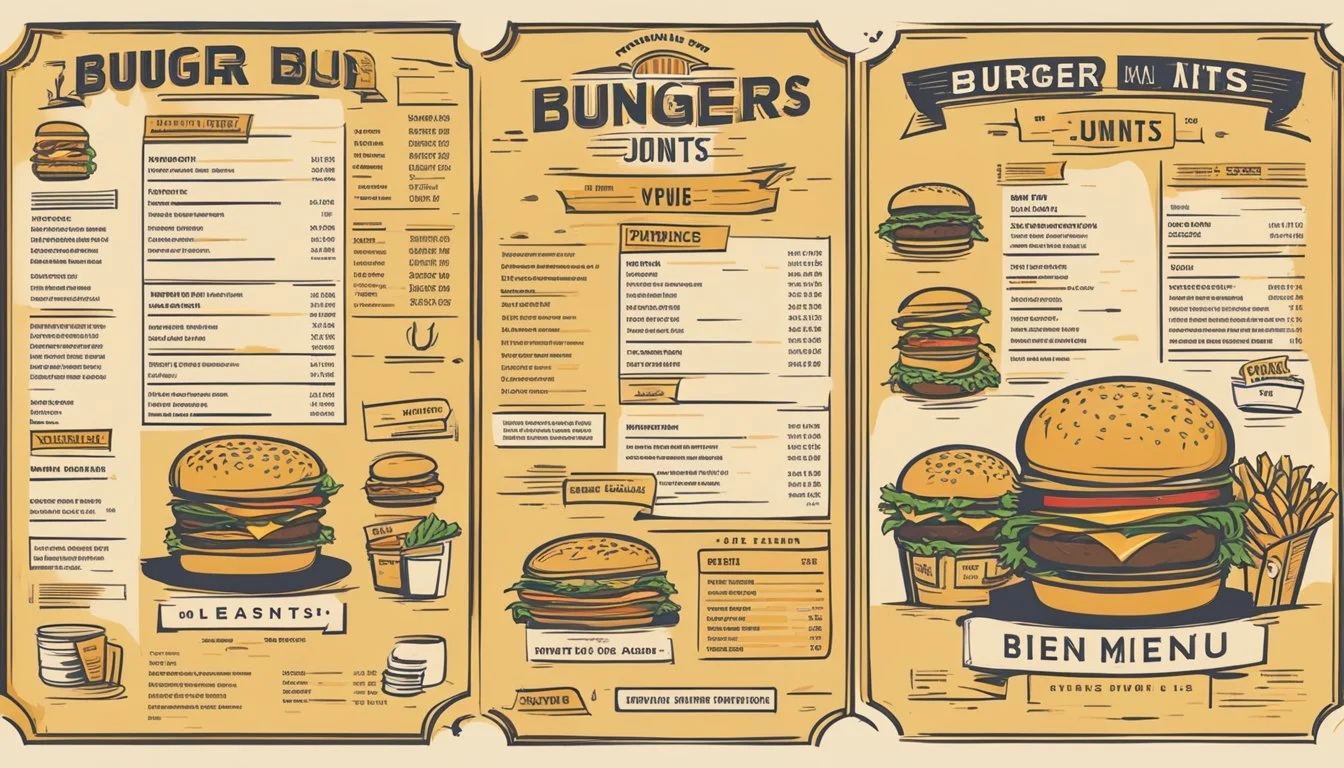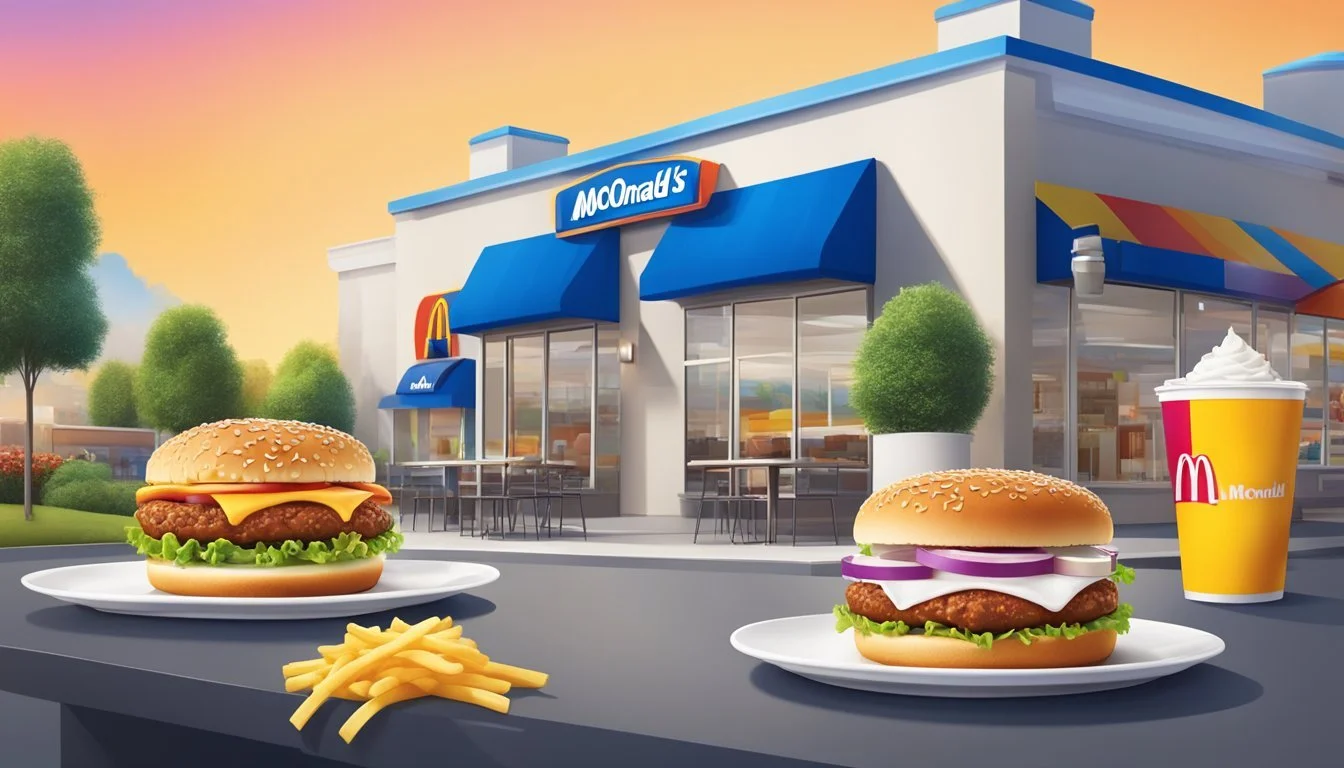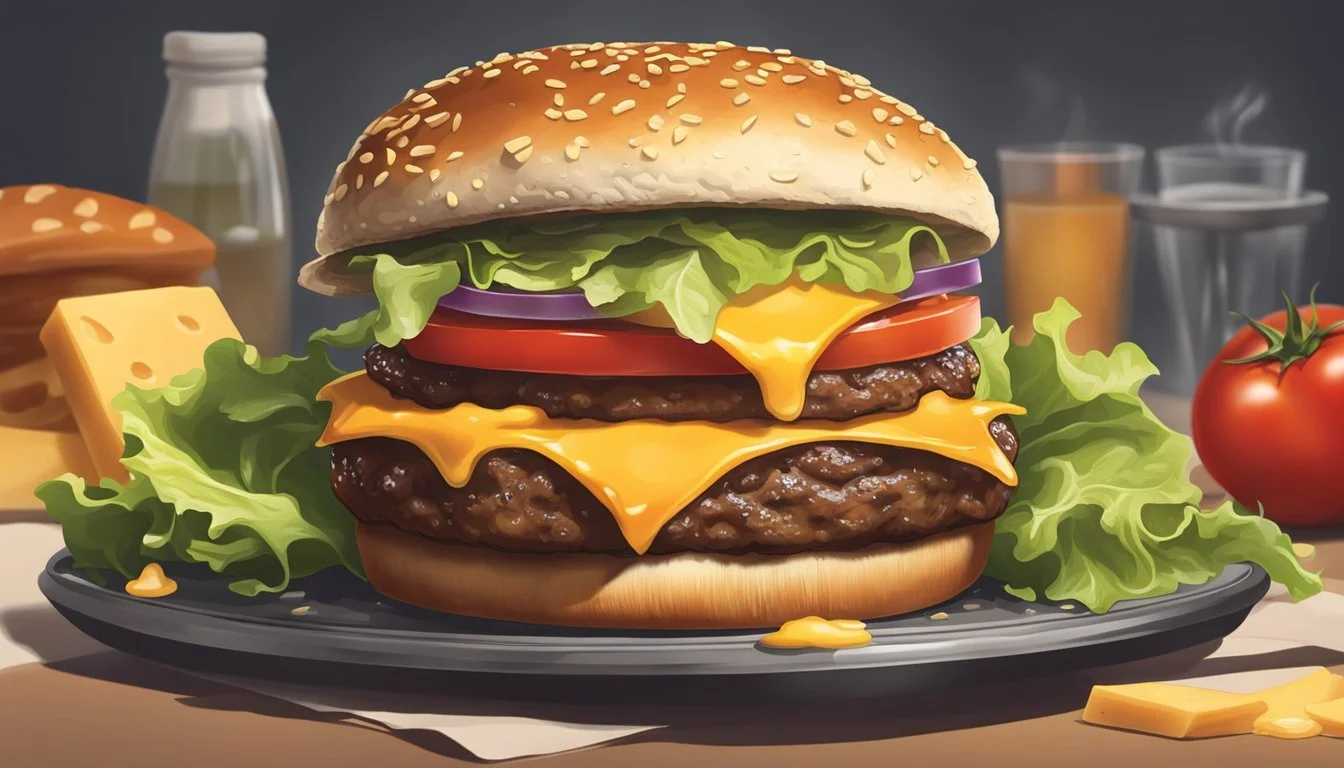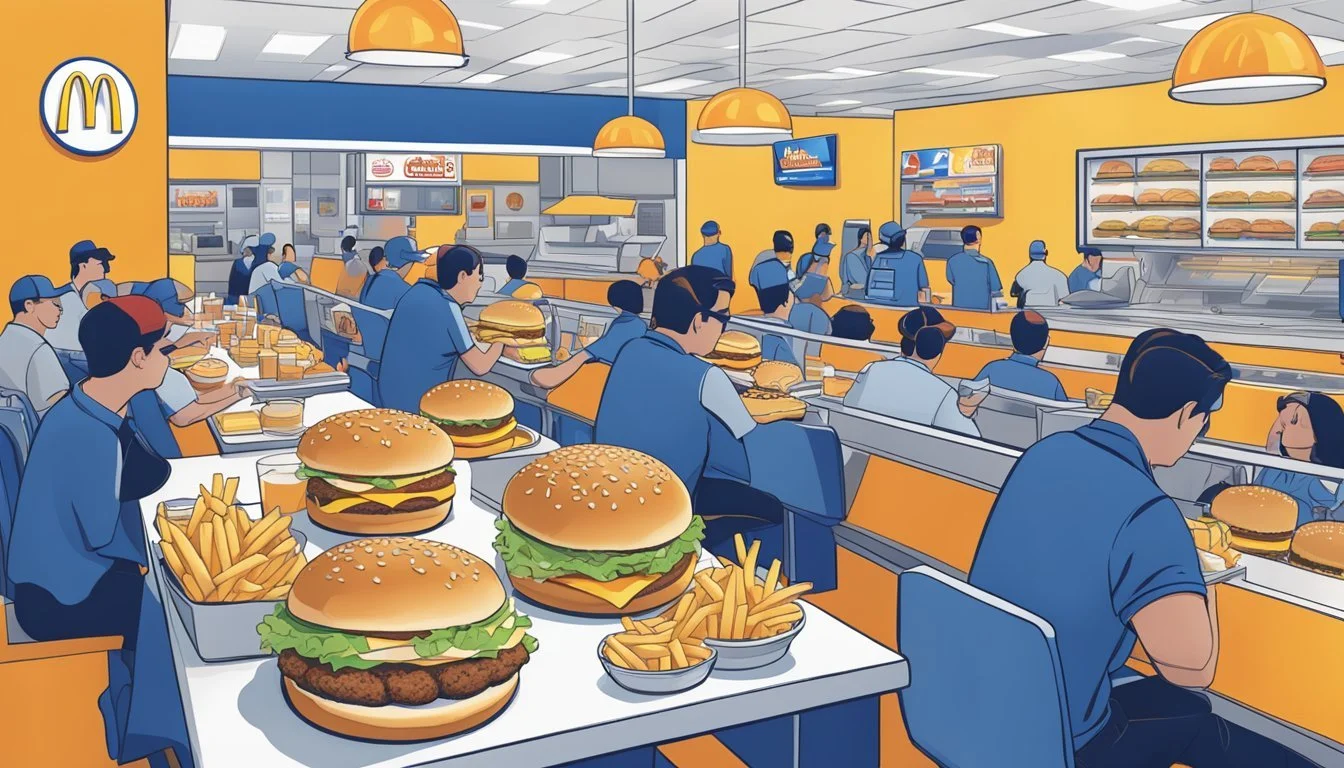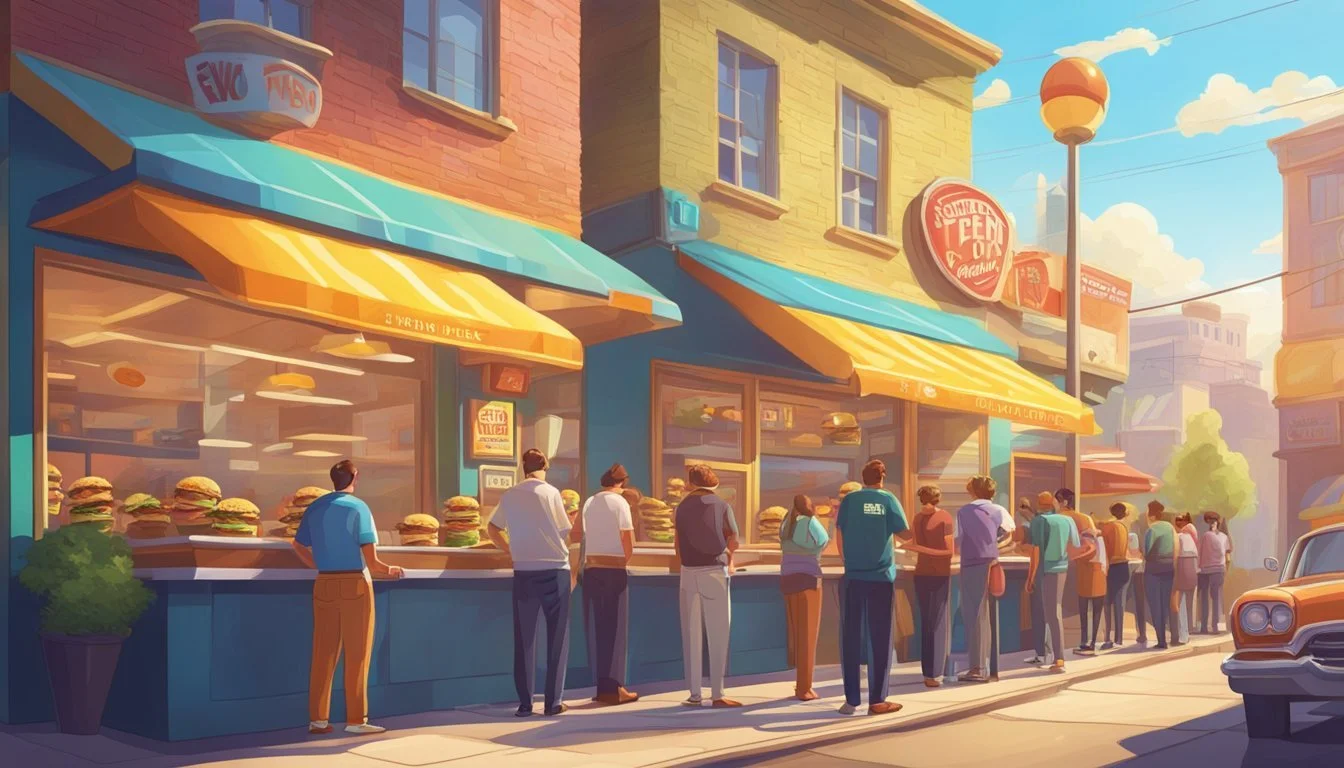McDonald's vs White Castle
An Objective Comparison of Popular Burger Destinations
The fast food industry in the United States is a battleground of flavors, innovation, and cultural impact, making it a significant segment of the American cultural landscape. Two notable contenders in the arena of quick-service burger joints are McDonald's and White Castle. Both have carved out their niches in the fast food domain with McDonald's being synonymous with the very concept of fast food globally, while White Castle holds the title of being the first fast-food hamburger chain in America. Their approaches to serving up burgers are distinct, with McDonald's focusing on a broad menu and rapid expansion strategy, and White Castle emphasizing the uniqueness of their "slider" burgers.
While McDonald's has a widespread international presence and a menu that boasts a variety of burgers including the classic Big Mac, White Castle has maintained a more focused menu, with their sliders being mini burgers that have earned a dedicated following over the years. The choices on offer at these establishments differ significantly, with McDonald's extending options for customization and White Castle keeping a more straightforward offering but including not just beef, but also chicken, fish, and plant-based alternatives. The success of these brands doesn't just come from their respective menus but also their ability to resonate with American consumers, incorporating convenience, taste, and affordability—all factors that play a pivotal role in fast food decisions.
Determining which of these titans offers a better burger experience is not simply a matter of taste but also involves considering factors such as menu diversity, nutritional value, cultural significance, and consumer loyalty. Each brand brings a unique heritage to the table, with McDonald's being a global powerhouse that's often a go-to option for many, and White Castle's cult-like status founded on its historic slider. The debate between McDonald's and White Castle is representative of the broader conversation on fast food in America, where brand identity and customer satisfaction are as important as the food itself.
History and Origin
In the early 20th century, two burger joints emerged that would radically transform the American food landscape. White Castle rooted itself in the Midwest, while McDonald's expanded from its inception to become a global icon.
The Legacy of White Castle
Founding: White Castle was established in 1921 by Billy Ingram and Walter Anderson in Wichita, Kansas. It stakes the claim as America's first fast-food chain. Impact: With its introduction of the 'slider', White Castle quickly became a herald of affordable, fast, and consistent food. It set the standard for the burgeoining fast-food industry throughout the Midwest.
McDonald's Global Ascension
Start: McDonald's was founded in 1940 by Richard and Maurice McDonald in San Bernardino, California. Growth: It was businessman Ray Kroc who, after becoming a franchise agent for the McDonald brothers in 1955, led McDonald's to its global expansion and household name status. Modern Day: Today, McDonald's operates over 38,000 locations worldwide, well beyond its Midwest origins, serving millions of customers daily.
Branding and Identity
When evaluating the impact of branding and identity of McDonald's and White Castle, each chain's unique approach to market presence is evident. Both have established a recognizable brand, but they've done so with markedly different strategies that resonate with their respective customer bases.
White Castle's Distinct Brand
White Castle pioneered the concept of the slider, a small-sized burger, which engendered a niche following. They started in 1921, a time when the reputation of hamburgers was dubious, and managed to standardize cleanliness and affordability in a way that revolutionized the fast food industry. Their branding revolves around the Original Slider, an iconic item that signifies more than just a cheeseburger—it's a representation of a legacy of innovation in fast-food.
McDonald's and the Golden Arches
On the other hand, McDonald's branding strategy has made it one of the most ubiquitous fast-food entities in the world. The simple yet powerful Golden Arches serve as a beacon for consistency and familiarity in both product and service. This logo is not only recognizable but also seen as a beckon of the brand's welcoming nature. The introduction of the Big Mac added an emblematic product that strengthened its identity and global appeal. Red, a color associated with appetite and energy, and yellow, signaling happiness and friendliness, dominate their branding materials—a strategic use of color psychology.
These distinct branding approaches define the customer experience at each chain, from the allure of the iconic cheeseburger to the perception shaped by signs and symbols.
Menu Comparisons
The sheer variety and signature items offered by McDonald's and White Castle reflect their unique approaches to serving fast food burgers. These range from McDonald's classic Quarter Pounder to White Castle's distinctive sliders.
Signature Offerings
McDonald's is renowned for its Quarter Pounder with Cheese—a burger featuring a quarter pound of beef, cheese, pickles, onions, ketchup, and mustard. In contrast, White Castle distinguishes itself with its iconic Sliders, which are small, square-shaped beef patties served on a bun with onions and pickles.
McDonald's Signature
Quarter Pounder with Cheese: beef, cheese, ketchup, mustard, onions, pickles
Big Mac: two beef patties, special sauce, lettuce, cheese, pickles, onions on a sesame seed bun
White Castle Signature
Cheese Slider: beef slider, cheese, onions, pickles
Double Cheeseburger: two beef slider patties, cheese, onions, pickles
Breadth of Menu
McDonald's offers a broad menu beyond its flagship burgers, including the Big Mac with its special sauce and the recently introduced Impossible Whopper, catering to vegetarians. The menu also extends to chicken sandwiches, breakfast items, and salads.
White Castle's menu, while focused, includes variations of its sliders, such as the Cheese Slider and Double Cheeseburger. Their offerings are more narrowly focused in comparison to McDonald's extensive menu.
McDonald's Menu Diversity
Beef Burgers: Big Mac, Quarter Pounder with Cheese, McDouble
Chicken and Fish: McChicken, Filet-O-Fish
Breakfast: Egg McMuffin, Sausage Biscuit
White Castle Menu Focus
Sliders: Cheese Slider, Double Cheeseburger
Other: Chicken Rings, Breakfast Sliders
Both establishments have evolved their menus over time, continuously incorporating new items while retaining their signature dishes that regular customers have come to recognize and expect.
Taste and Flavor Profiles
When it comes to McDonald's versus White Castle, their burgers offer distinctly different taste and flavor profiles that cater to varied palates. Each chain uses a unique blend of key ingredients and cooking techniques to create sensory experiences that are signature to their brand.
Key Ingredients
At McDonald's, the burgers typically feature 100% pure beef patties, seasoned with just a pinch of salt and pepper. The inclusion of diced white onions directly on the grill adds a unique taste to their beef patties, enhancing the flavor with a slight sweetness and freshness. The standard toppings are often a slice of American cheese, adding a creamy and slightly tangy contrast to the savory beef.
White Castle's approach to taste prioritizes their signature sliders. They use beef as well, but their preparation process includes steaming the beef patties on a bed of onions, infusing them with a moist texture and a flavorful onion aroma. The sliders include American cheese that melts into the beef, marrying the flavors together.
Sensory Experience
McDonald's burgers are known for their juicy and succulent patties, which some aficionados attribute to the cooking process where fewer burgers on the grill ensure a hotter cooking environment. Their patties have a distinctively rich and savory flavor that is both bold and straightforward.
White Castle, on the other hand, offers a different sensory experience with their steamed sliders. The texture is softer and the patties are moist, giving a bite that is less about the char and crispness but more about a melt-in-your-mouth sensation. The steamed little buns add to the softness, coming together for a bite that is light yet satisfying.
In summary, the taste and flavor profiles of McDonald's and White Castle are reflective of their unique culinary approaches: McDonald's with its classic, juicy, flame-grilled beef burgers, and White Castle with its distinctive, steamed sliders that prioritize a soft and flavorful eating experience.
Nutrition and Quality
When comparing McDonald's to White Castle, the focus often goes to the nutritional content and quality of their burgers. Each chain has its own approach to ingredients transparency and health considerations.
Ingredients Transparency
McDonald's has made strides in recent years to improve the transparency of its ingredients, phasing out certain preservatives and focusing on fresher options. Their burgers boast a simpler ingredient list compared to past offerings, indicating a shift towards better quality and recognizability in their food items.
White Castle, on the other hand, is known for its small, square hamburgers often referred to as "sliders." The chain takes pride in using 100% beef patties without fillers, binders, or preservatives. They also disclose full ingredient information, fostering trust among customers regarding the quality of their food.
Health and Wellness Considerations
In terms of nutrition, both chains provide information on the protein and fiber content of their burgers, which are crucial for those conscious about maintaining a balanced diet.
McDonald's Burgers:
Protein: varies by burger option
Fiber: lower in comparison to some competitors
White Castle Burgers:
Protein: generally moderate
Fiber: often minimal due to the small size of sliders
Both restaurants offer menu items that cater to health-conscious individuals, but McDonald's typically has a slight advantage in terms of lower sodium content across various burger selections. However, White Castle burgers, being smaller, may naturally lead to less calorie and sodium intake if consumed in moderation. The availability of detailed nutritional information allows customers to make informed choices appropriate for their health goals.
Price and Value Proposition
When comparing McDonald's and White Castle, one needs to consider both cost efficiency and portion sizes to understand their value proposition fully.
Cost Efficiency
McDonald's has traditionally offered burgers at a competitive price point, with historical prices such as $0.85 for a burger, reflecting a market strategy aimed at providing cost-effective meal options. White Castle, hailed as the first fast-food hamburger chain in the United States, offers small square burgers that are typically cheaper than other fast-food options. They are known for their value as sliders can be purchased individually or in larger quantities.
Portion Sizes
McDonald's provides a variety of burger sizes, with options ranging from a simple hamburger to the larger Big Mac. Portion sizes tend to be consistent across the McDonald's chain, providing a filling meal for the price. White Castle's burgers are smaller, often referred to as sliders, yet they offer a unique value in that consumers can purchase greater quantities at a lower cost, allowing for customization in meal size based on individual appetite and preference.
Cultural Impact
In examining the cultural influence of McDonald's and White Castle, one must consider their seminal roles in popularizing the fast-food burger and setting trends within the fast-food industry.
Fast-Food Influence on Society
These two chains have indelibly shaped how society views and consumes fast food. McDonald's revolutionized the industry with its widespread franchise model, proliferating the concept of the drive-thru and consistently adding innovative items like the Big Mac and Happy Meals that resonated globally. On the (burger) flip side, White Castle's introduction of the 'slider'—a small, square hamburger—helped redefine what could be considered fast food, promoting the idea of quick and affordable bites that are now ubiquitous.
The ripple effect of these chains' operations influenced numerous others in the sector, including Wendy's, Burger King, and Jack in the Box. Through standardization practices, the use of American cheese on burgers became a norm, perfecting the cheeseburger formula beloved across the United States. Furthermore, White Castle's model of efficiency and affordability encouraged other players like Checkers and Rally's to follow a similar cost-effective approach.
Popularity and Trends
The fast-food landscape is continually evolving, and various regional players like In-N-Out, Whataburger, and Five Guys have carved their niches, each giving their own spin to the classic American cheeseburger. More recently, chains such as Sonic, Fuddruckers, Dairy Queen, BurgerFi, and Red Robin contribute to the diverse fast-food options available, offering everything from sit-down experiences to gourmet-style burgers.
These chains actively participate in defining and responding to consumer trends. For instance, the surge in demand for quality ingredients has seen chains like Five Guys emphasize fresh ground beef and hand-cut fries. The desire for novel flavors has led to unique regional experiments, from the McAloo Tikki in India to Red Robin's gourmet burgers in the U.S. As trends fluctuate, the fast-food industry, with McDonald's and White Castle as pioneers, adapts to meet the evolving tastes and expectations of its customers.
Dining Experience
When comparing McDonald's and White Castle, the dining experience involves two primary aspects: the store atmosphere and customer service quality.
Store Atmosphere
McDonald's is known for its consistent and familiar layout worldwide, featuring a family-friendly environment with clean seating areas and modern decor. Many locations have incorporated digital kiosks for ordering, which contributes to a modern and efficient customer experience.
Locations: Ubiquitous, easy to find
Ambience: Generally bright and inviting
Conversely, White Castle has a distinct atmosphere characterized by its smaller, more retro-style eateries. The mood at White Castle outlets often feels nostalgic, harking back to its early 20th-century roots.
Locations: Less widespread than McDonald's
Ambience: Typically budget-oriented and open late
Customer Service Quality
At McDonald's, the service is designed to be quick and efficient, capitalizing on the fast food model. Drive-throughs at McDonald's are optimized for speed, with many locations famous for serving customers in a matter of minutes.
Drive-Through: Notably fast
Staff Interaction: Generally minimal but friendly
White Castle staff tend to offer a more personalized experience, reflecting their less hurried dining environment. Although not as quick as the drive-through-oriented McDonald's, White Castle's service often presents a more relaxed pace, which can be a positive for customers not in a rush.
Drive-Through: Less focus compared to McDonald's
Staff Interaction: More room for engagement due to a relaxed setting
Innovation and Evolution
McDonald's and White Castle have both contributed significant innovations in the fast food industry. Their evolution is marked by distinct strategies in menu development and market adaptation, influencing how customers experience their offerings.
Menu Development
White Castle has a long-standing history in the fast food industry, often credited with the creation of mini burgers, also known as sliders. Sliders have become a staple for White Castle, remaining relatively unchanged and beloved for their simplicity. McDonald's, on the other hand, has continually expanded its menu items, frequently introducing new burgers with varying toppings and flavors to appeal to a broader audience. Toppings have played a crucial role in McDonald's ability to offer a diverse range of flavors, including limited-time offerings that create a buzz among customers.
Both chains have adapted to the growing demand for vegan options. McDonald's has been testing and rolling out plant-based options, such as the McPlant burger in some locations. White Castle introduced a vegan slider, partnering with plant-based industry leaders to provide an alternative for health-conscious and vegetarian customers.
Market Adaptation
The two burger joints have taken different paths in their market adaptation strategies. McDonald's has evolved into a global brand with an extensive international presence. They cater to regional tastes, varying their menu items to match local preferences, which has been a cornerstone of their international strategy. The company also swiftly grasps technological advancements, integrating digital ordering and delivery options to enhance customer convenience.
White Castle has maintained a strong nostalgic brand image, focusing mainly on its American market presence with a moderate adaptation to the digital world. It remains consistent in offering the classic dining experience that many associate with old-fashioned American fast food. However, White Castle has embraced innovation through methods like introducing new technologies in their kitchens, emphasizing the simplicity and speed of their service.
McDonald's and White Castle continue to evolve, ensuring their menu development and market adaptation strategies meet the changing demands of the fast food industry while respecting their unique brand identities.
Conclusion
In the fast-food landscape, two iconic brands often come up for comparison: McDonald's and White Castle. McDonald's, with its global presence, offers a menu that caters to a wide audience, including the famous Big Mac with its sesame-seed bun, often considered one of the best burgers by enthusiasts. On the smaller scale, White Castle stands strong with its unique sliders that have a dedicated fan base.
White Castle's menu includes not only their signature sliders but also items like Chicken Rings and sides like French fries. They offer a distinctive taste with their small, square burgers that are steamed with onions. This method imparts a flavor that differentiates them from McDonald's beef patties.
McDonald's, conversely, boasts a diverse menu ranging from the Double Stack burgers to Chicken McNuggets and world-renowned fries. The addition of the Impossible Whopper at sister chain Burger King adds a plant-based option to the traditional fast-food burger competition.
Brand Comparison
McDonald's
Global Brand: Yes
Market: Diverse Menu
Focus: Wide-ranging offerings
Iconic Item: Fries
White Castle
Global Brand: Niche Market
Market: Focused Menu
Focus: Steamed Burgers
Neither brand offers items such as Smashburger's or Shake Shack’s menu, which include gourmet-style burgers and hot dogs. Additionally, fans of tangier options like the Sourdough Jack or the Bacon King may not find an equivalent at these two establishments.
It's important to note that personal preference plays a significant role. McDonald’s provides a more recognized taste with its Big Mac, while White Castle’s sliders are a cult favorite. Chili, often a choice at local burger joints, isn't a highlight for either chain, but both offer their own version of tangy barbecue sauce.
In conclusion, the "better" burger joint is subjective. Each has carved out its niche—McDonald's with its extensive menu and global reach, White Castle with its distinctive small burgers and loyal customer base.

